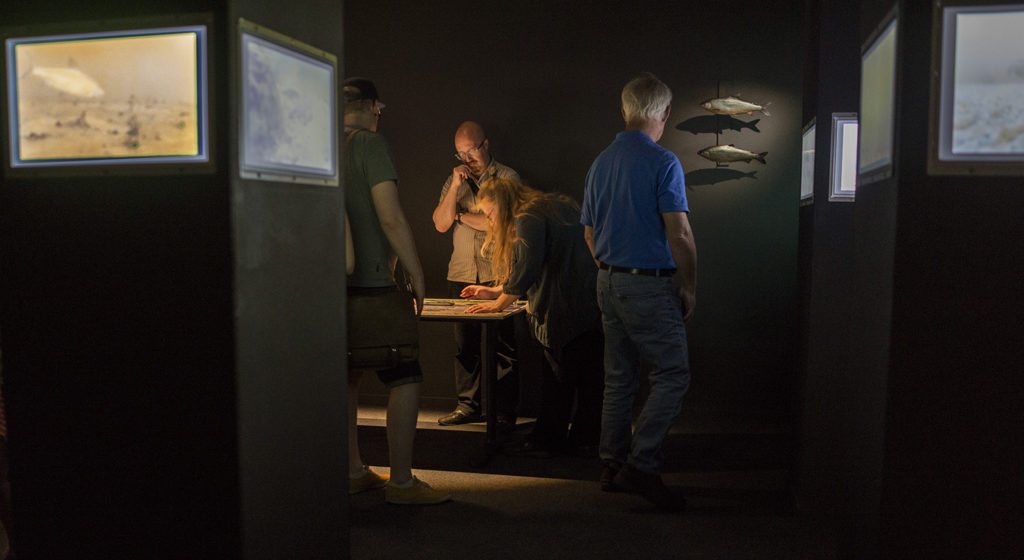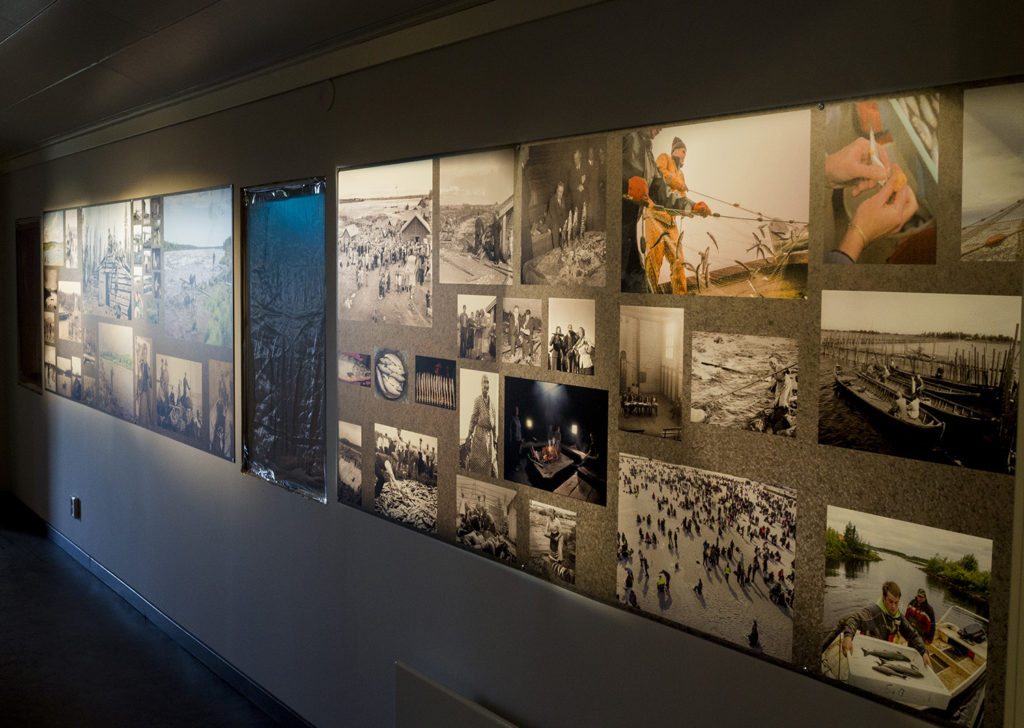The Fishing Museum of Torne Valley Exhibition
FISH AND MAN IN THE TORNE VALLEY
Fish and man in the Torne Valley
Through the ages, fishing has been an important factor in the lives of the people in the area – as food and source of income, as well as an integral part of local culture.
ROOM 1 – In the world of fish
Many types of fish swim in the Torne river watershed – with char in the north and bleak in the south. Here, you can watch 12 different species filmed under water.
Fish have well-developed hearing and some even produce sounds, used during the mating season and to repel enemies. In the sound-shower, you can actually hear the fishes talk.
What does the seascape look like beneath the water surface? You can have a virtual 3D-model of the riverbed at the Kukkola rapids sent to your mobile phone.

ROOM 2 – Fishing methods
Through the centuries, many methods and contraptions have been used to catch fish in area – often with ingenious techniques. Everything from simple rods to advanced wooden fishing piers have been used.

ROOM 3 – Man and Fish in the Torne Valley
Fish has had an impact on life in the river valley in all sorts of ways. Fishing can offer both a relaxing hobby and a way to earn a living. The fishing culture is surrounded by rituals, feasts and competitions where this ancient activity is celebrated.
The question of ownership and control of fishing waters have been hot issues since the industry started. Through the years, locals have fought many a battle with national authorities. Salmon fishing in the Torne river has for instance provided both church and state with a large tax income
Different branches of the industry have also been at odds from time to time, with clashes between for instance river fishing and sea fishing.
Fish offer food in different forms. It can be boiled, fried, salted, smoked and dried. There are other uses as well – fish hide is strong and can be used to produce clothes, shoes and bags among other things.

